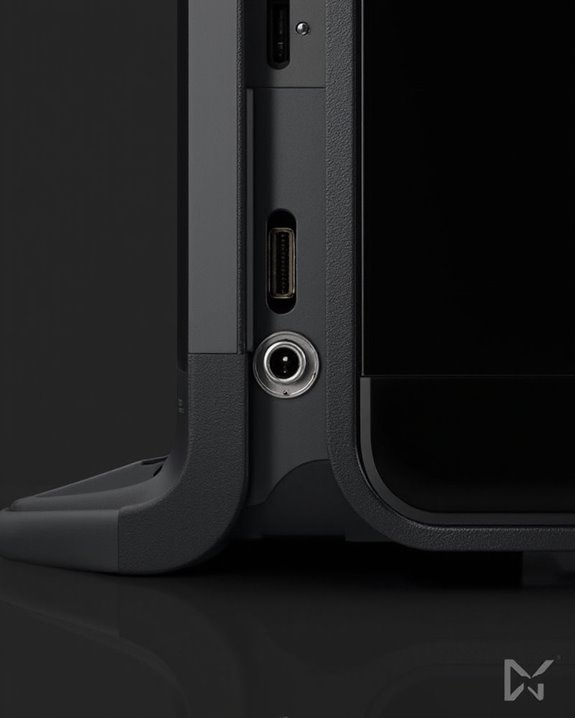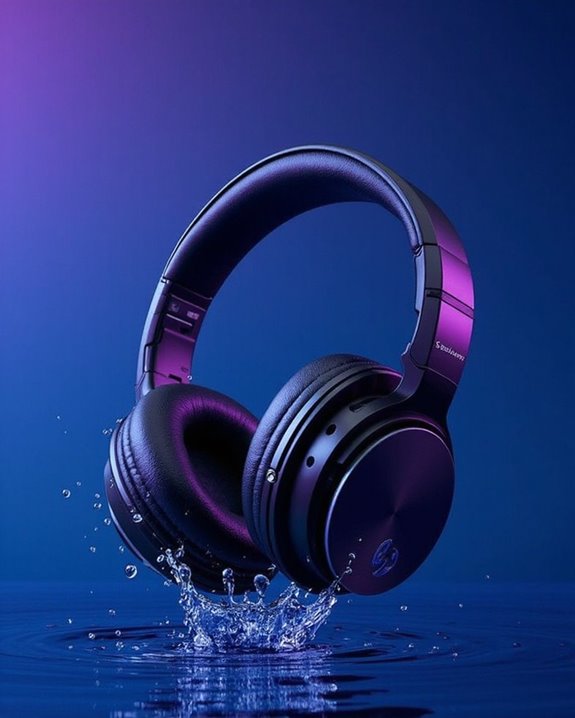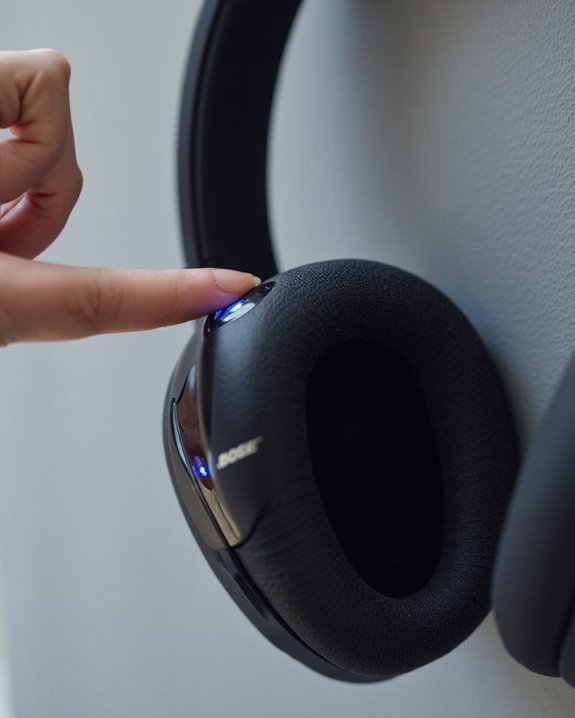ANC (Active Noise Cancellation) headphones use advanced technology to reduce unwanted ambient noise. They work by detecting external sounds via built-in microphones, then generating inverse sound waves that cancel these noises through destructive interference. Most ANC headphones reduce noise by 20-40 dB, performing best against low-frequency sounds (20-800 Hz). Three main types exist: feedforward, feedback, and hybrid systems, each with distinct advantages for different environments. Understanding these technical aspects helps users select the best noise-canceling solution.
Key Takeaways
- ANC headphones use microphones to detect ambient noise, then create inverse sound waves that cancel unwanted sounds.
- These headphones achieve noise reduction levels of 20-40 dB, performing best against low-frequency sounds between 20-800 Hz.
- Three types exist: feedforward (external mics), feedback (internal mics), and hybrid systems combining both for broader cancellation.
- ANC technology excels at reducing consistent, low-frequency noise but struggles with unpredictable high-frequency sounds.
- Beyond noise reduction, ANC headphones can reduce stress, lower cortisol levels, and create personal quiet zones for better focus.
The Science Behind Active Noise Cancellation
Active noise cancellation (ANC) operates on the fundamental principle of destructive interference, where specially designed systems generate sound waves that are exact opposites of unwanted ambient noise. When these phase-inverted sound waves collide with incoming noise, they effectively neutralize each other, creating a quieter listening environment.
ANC technology excels particularly at reducing low-frequency sounds between 20-800 Hz, such as engine rumbles, air conditioner hums, and airplane cabin noise. The process relies on strategically positioned microphones that capture ambient sounds before they reach the ear. These signals are then processed by electronic circuitry that generates the inverse waveform.
Most commercial ANC headphones achieve noise reduction levels between 20-40 dB, substantially diminishing environmental distractions. However, the technology has limitations—it performs best against consistent, predictable noise patterns rather than sudden, irregular sounds. Some advanced models, like the Soundcore Space A40, can reduce noise by up to 98% using adaptive noise cancelling technology that automatically adjusts to surrounding sounds.
How ANC Technology Actually Works

Precisely how does noise-cancelling magic happen inside those sleek headphones? The process begins with strategically placed microphones that detect ambient noise around the listener. This audio information is instantly fed to an ANC chipset—the brain of the operation.
Through a principle called Wave Inversion, the chipset generates sound waves that are the exact opposite (180 degrees out of phase) of the detected noise. When these anti-noise signals mix with incoming sound waves, they effectively neutralize each other, creating zones of relative quiet.
Real Time Monitoring systems continuously adjust these anti-noise waves to match changing environmental sounds. As ambient noise patterns shift, internal microphones detect these changes, and the ANC processor adapts its output accordingly. This constant adaptation guarantees maximum noise reduction regardless of changing surroundings.
Many advanced ANC headphones, such as the Beats Studio Pro, combine fully-adaptive active noise cancelling with features like Transparency mode to further enhance user experience.
Feedforward vs. Feedback: Different ANC Approaches
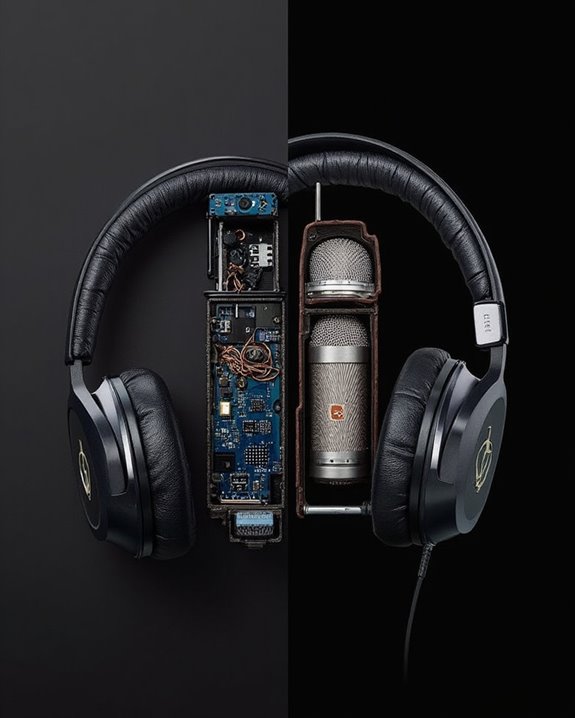
Not all noise-cancellation systems are created equal. The two primary ANC architectures—feedforward and feedback—differ substantially in their microphone placement and performance characteristics, leading to varied adoption rates across different consumer segments.
Feedforward systems position microphones externally, capturing ambient noise before it reaches the ear. This configuration excels at mid-frequency isolation but may amplify wind noise, affecting outdoor usability. Its simpler implementation makes it cost-effective for entry-level ANC products.
Feedback systems, with internal microphones, monitor sound at the ear directly. These systems handle low-frequency noise effectively and offer superior wind resistance—key preference factors for commuters and travelers. Their ability to adapt to fit variations and automatically correct signals provides consistent performance across different users.
Each approach presents distinct advantages depending on intended use environment and target noise profiles. Many active cancellation systems also incorporate AI-powered algorithms for dynamic external sound reduction, enhancing overall noise suppression performance.
Hybrid ANC Systems: The Best of Both Worlds
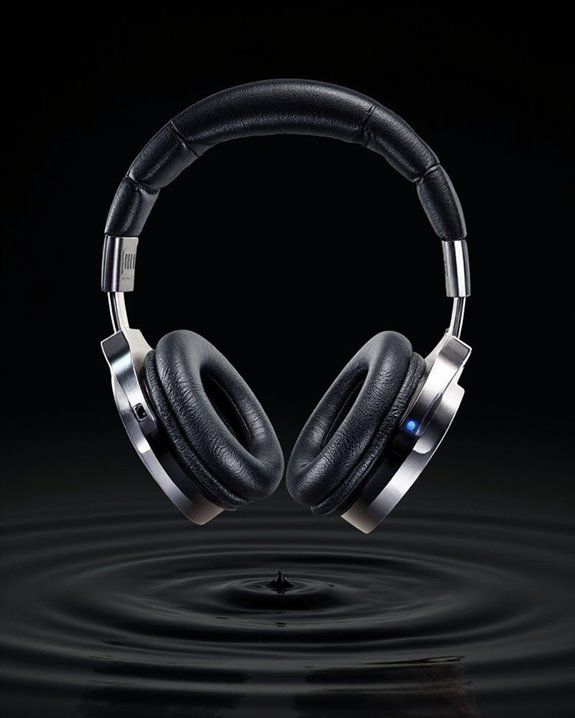
The evolution of noise-cancellation technology has led to hybrid ANC systems, which combine feedforward and feedback approaches into a single, complete solution. These sophisticated systems utilize both external and internal microphones to capture and cancel noise across a broader frequency spectrum, addressing limitations of single-approach methods.
Modern Audio Integration in hybrid systems allows for seamless connection with various devices while maintaining superior sound quality during noise cancellation. The technology adapts to different environments, making it ideal for frequent travelers and office workers alike.
Current Wearable Trends show hybrid ANC becoming increasingly popular in premium headphones like the Jabra Elite 5. While typically more expensive than standard ANC options, hybrid systems offer superior performance by effectively canceling both low-frequency rumbles and higher-pitched sounds for a more immersive listening experience.
Real-World Benefits of Using ANC Headphones

Why have noise-canceling headphones become essential tools for modern life beyond mere convenience? ANC technology offers substantial advantages across various environments by effectively reducing low-frequency ambient noise that can impact both physical and mental wellbeing.
Health Impacts of ANC headphones extend beyond comfort to include measurable benefits like stress reduction, improved hormonal balance, and prevention of noise-induced hearing loss. Studies show reduced cortisol levels and lower blood pressure among users who regularly employ noise cancellation in high-stress environments.
The Travel Benefits are equally important, with ANC headphones creating personal quiet zones during commutes and flights. This technology enables improved focus and cognitive function while traveling, and allows users to enjoy audio content at lower, safer volumes without competing against environmental noise.
Limitations of Active Noise Cancellation Technology
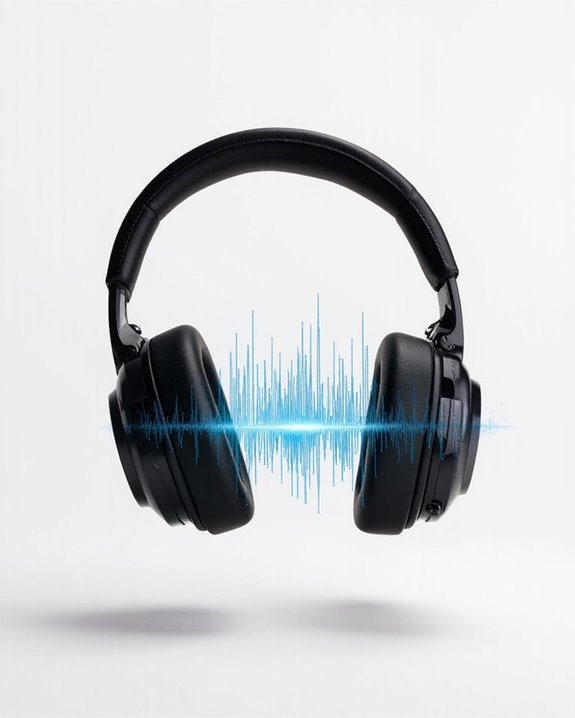
Despite their impressive capabilities, active noise cancellation headphones face several inherent technological constraints that limit their effectiveness in real-world scenarios. The technology struggles particularly with high-frequency sounds, as these are more difficult to accurately sample and cancel compared to lower frequencies.
Battery Drain represents a significant drawback, as the active components require continuous power to function. This increased energy consumption significantly reduces usage time between charges compared to passive headphones.
ANC technology also introduces Safety Risks by reducing environmental awareness. Users may miss important auditory cues like emergency sirens, approaching vehicles, or announcements, making them potentially hazardous in situations requiring situational awareness. This limitation is particularly concerning for pedestrians in urban environments or travelers in transit stations.
Comparing ANC to Passive Noise Isolation
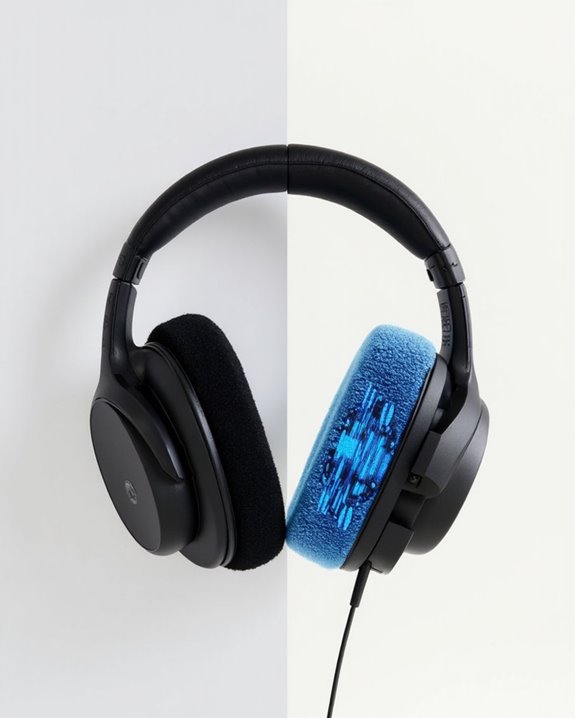
When examining noise reduction technologies in modern headphones, two fundamentally different approaches emerge: Active Noise Cancellation (ANC) and Passive Noise Isolation (PNI). ANC employs microphones and electronic circuitry to detect and counteract external sounds, while PNI relies solely on physical barriers to block noise.
The effectiveness varies by frequency range—ANC excels at reducing low-frequency, constant noises like airplane engines, while PNI better handles higher frequencies through physical blocking. Cost differences are significant, with ANC headphones commanding premium prices due to their advanced technology components.
Comfort tradeoffs exist between these approaches. PNI requires tight-fitting ear cups or buds for effective sealing, while ANC models may add weight from batteries and circuitry. Battery dependence represents another distinction, as PNI functions without power, offering reliability in extended usage scenarios.
Essential Features to Look for When Buying ANC Headphones
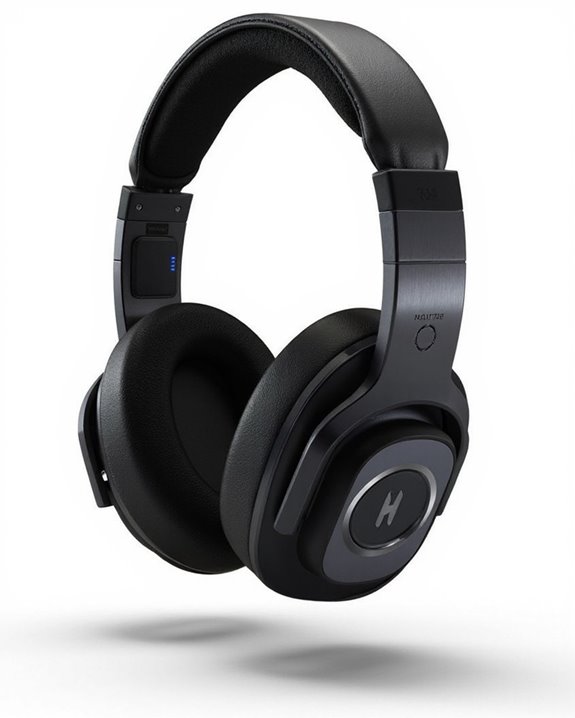
Having compared the fundamentals of noise reduction technologies, prospective buyers must understand which specific features make ANC headphones worth their premium price tag. When evaluating options, consumers should prioritize noise reduction capacity (20-40dB) and frequency range effectiveness.
Comfort Features represent essential considerations for extended use. Ergonomic designs with quality ear cushions, lightweight construction, and adjustable headbands prevent fatigue during long listening sessions. These elements complement the technical noise-canceling capabilities.
Battery Options greatly impact user experience. Most premium models offer 20+ hours of playback, with quick-charging technology providing several hours of use from minimal charging time. Models with transparency modes allow users to temporarily hear environmental sounds without removing headphones.
Additional considerations include wireless connectivity, water resistance ratings, and integration with voice assistants for enhanced functionality in various environments.
Frequently Asked Questions
Can ANC Headphones Cause Headaches or Ear Discomfort?
ANC headphones can trigger headaches in some users due to ear pressure sensations. The technology creates a pressure-like feeling that may cause discomfort, particularly among individuals sensitive to inner ear stimulation or pressure changes.
Are ANC Headphones Safe to Use While Driving or Cycling?
ANC headphones compromise driving safety and reduce cycling awareness by blocking important auditory cues. They’re illegal for drivers in many states and risky for cyclists, who should prioritize environmental awareness over audio quality.
How Do I Troubleshoot When ANC Suddenly Stops Working?
When ANC stops working, one should first check the headphone’s battery level. Then perform a firmware update via the manufacturer’s app. A reset may also restore functionality if software issues persist.
Can ANC Headphones Be Used Effectively on Airplanes During Takeoff?
Silent amidst the roar, ANC headphones function exceptionally during takeoff. They effectively combat flight noise by generating inverse sound waves. Travelers should conduct ANC testing before departure to guarantee ideal performance throughout their journey.
Do ANC Headphones Work With Hearing Aids?
ANC headphones can work with hearing aids. Compatibility options depend on hearing aid type, with over-the-ear designs typically providing better hearing integration for BTE and RIC aids while minimizing feedback issues.


